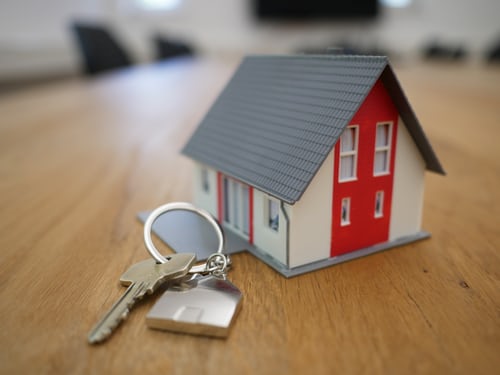By
|
Getting your Trinity Audio player ready...
|
HRA or House Rent Allowance is an important component of the salary that is paid by employers. Employers pay this allowance to help employees with their accommodation requirements. Even those individuals that are self-employed can claim tax benefits associated with House Rent Allowance.
Before we go deep into how to calculate HRA, let us first understand what is House Rent Allowance.
What is HRA?

HRA or House Rent Allowance is a component of the salary paid to employees by their employer. This salary component is towards meeting the accommodation expense of renting a place for residential purposes. The House Rent Allowance is thus an integral part of a person’s salary. It is applicable for both salaried as well as self-employed individuals.
As per section 10 (13A) of the Income Tax Act, the house rent allowance for salaried people is accounted for. This is hence in accordance with rule 2A of the Income Tax rules. For self-employed individuals the HRA exemption is not accounted for under this section, but they can claim tax benefits under section 80GG of the Income Tax Act.
Now that we understand what House Allowance Rent is a little better, let us also understand how to calculate HRA.
How to calculate HRA and HRA exemption
There are several factors that affect the process of HRA calculation. So before we elaborate on House Rent Allowance Calculation , let’s take a look at these factors.
Factors that affect HRA calculation
- Salary
- House Rent Allowance Received
- Actual Rent Paid
- City in which the individual resides (metro city like Bangalore, Delhi, Mumbai, non-metro city or rural)
How to Calculate HRA
Let us illustrate the house rent allowance calculation through an example. Let us take the example of Aparajita who stays in Bangalore. She works in Wipro and earns a salary of Rs. 60000 every month. She is renting an apartment in Koramangala, and pays a rent of Rs. 25,000 every month.
She is eligible for a house rent allowance that is equivalent to 50% of her basic salary. 50% of Rs. 60,000 is equal to Rs. 30,000.
She receives an actual house rent allowance of Rs. 35,000. The excess of rent paid over 10% of her total salary is equal to Rs. 16,000 (Rs. 25,000 – 10% of Rs. 60,000 or Rs. 6000 = Rs. 19,000)
Thus her net taxable house rent allowance is Rs. 35,000 subtracted by Rs. 19,000 or Rs. 16000.
| Aparajita apartment rent | Rs.25,000 per month |
| Aparajita is eligible for a HRA equal to 50% of the basic salary | 50% of Rs.60,000 = Rs.30,000 |
| Actual HRA he receives from her company is | Rs.35,000 |
| Excess of rent paid over 10% of total salary | Rs.25,000 – 10% of Rs.60,000 So, Rs.25,000 – Rs.6,000 = Rs.19,000 |
| Hence, net taxable HRA for Aparajita | Rs.35,000 – Rs.19,000 = Rs.16,000 |
There are several online calculators if you are still confused about how to calculate HRA.
How to calculate HRA Exemption
Salaried employees are eligible for HRA exemption for the income tax that they are required to pay each financial year. As per the Income Tax Act, for the calculation of house rent allowance, the least of the following three components is taken into consideration –
- Actual HRA received by the employer
- 50% or 40% of the basic salary depending upon a metro or a non-metro location, respectively
- Rent paid minus 10% of basic salary
Where, basic salary refers to basic + DA + commission on sale at fixed rate.
Once you figure out how to calculate HRA, you can make a HRA Claim.
How to make a House Rent Allowance Claim
To make a HRA or house rent allowance claim, individuals are required to submit their rent receipts. In case the rent paid in a financial year is more than Rs.1 Lac they also need to show the PAN details of their landlord. A circular related to the same has mentioned that in case the landlord does not possess a PAN number then the Income Tax Department has multiple technical platforms through which it verifies the information furnished by tax-payers. Thus fabricating these details will automatically be detected by the Tax Department.
Important Rules to Keep in Mind Pertaining to House Rent Allowance
- 40% of the basic salary is calculated as HRA for people living in non-metro cities while the same is 50% for employees in metro cities like Mumbai or Chennai.
- In order to avail HRA benefit it is not necessary that you pay rent only to a landlord. Individuals can pay rent to their parents and show relevant receipts to claim HRA exemption.
- However, you cannot claim HRA exemption by showing that you pay rent to your spouse. This is not permissible under the income tax law.
- Rent receipts need to be submitted as proof in order to avail tax exemption benefit.
- PAN card details of the landlord need to be furnished so that relevant tax deductions can be made from his/her income from property (rent received).
- PAN details of the landlord are required only if the rent paid exceeds one lac rupees per annum.
- HRA received by an employee who is residing in his/her own house is not exempt from income tax.
Calculate your HRA and be financially secure
Knowing how to calculate HRA is one of our many rights on our way to be financially secure. While rented apartments give way to HRAs, ready to move in flats too have their benefits. Check the best ready to move in flats and apartments to enjoy the best of luxury living everyday.
FAQs on House Rent Allowance
Yes. HRA is dependent upon the city in which you stay. Moving from a non-metro city to metro would change your HRA from 40% to 50% of your basic salary.
You are required to submit PAN Card, Rent receipt and Photocopy of rent agreement if required.
Yes. You can claim both tax exemptions if you are able to furnish sufficient proof for the same.
Yes. You can pay rent to your mother and father in order to avail tax exemption of HRA.
HRA is mainly determined by your salary. As per the income tax rules, the tax-exempt part of the HRA (House Rent Allowance) is the minimum of the following amounts:
– Actual HRA component of salary
– 50% of basic salary if he/she resides in Delhi, Chennai, Kolkata, or Mumbai; 40% if his/her residence is in any other city
– Actual rent paid less 10% of basic salary
Leave a comment







